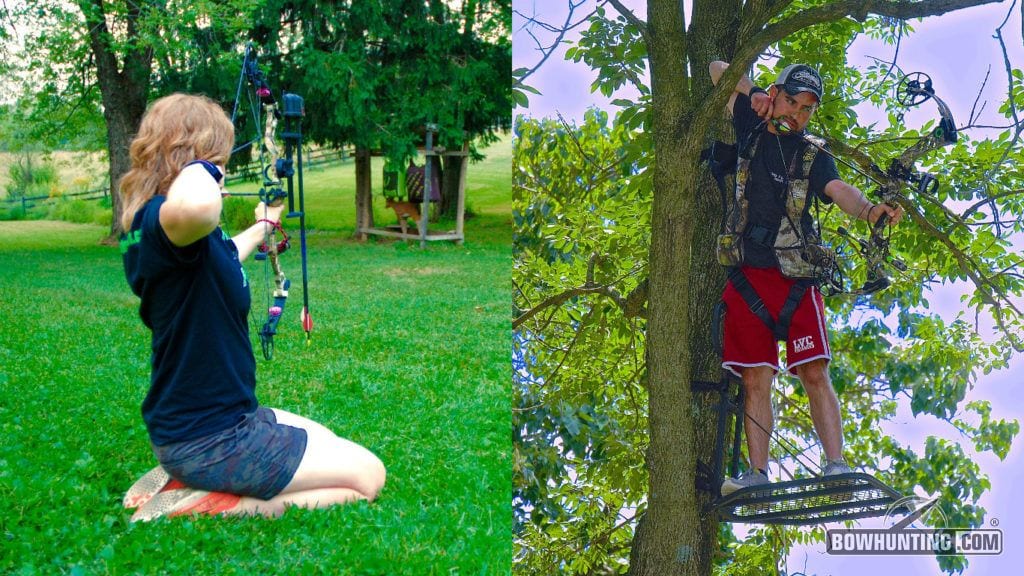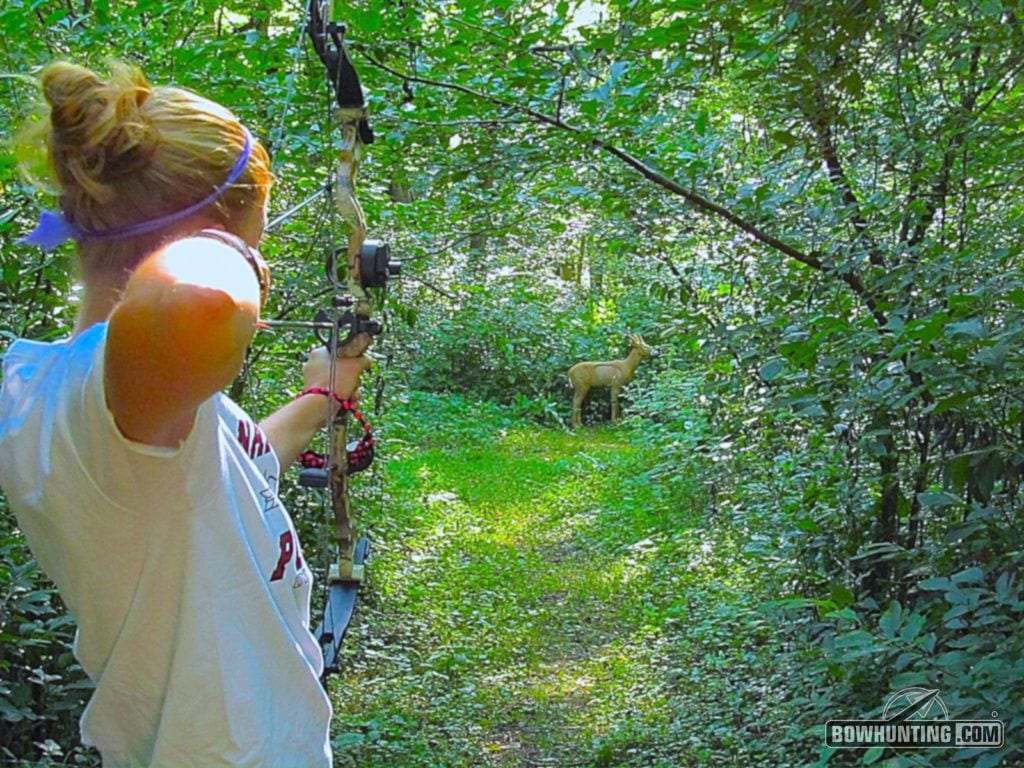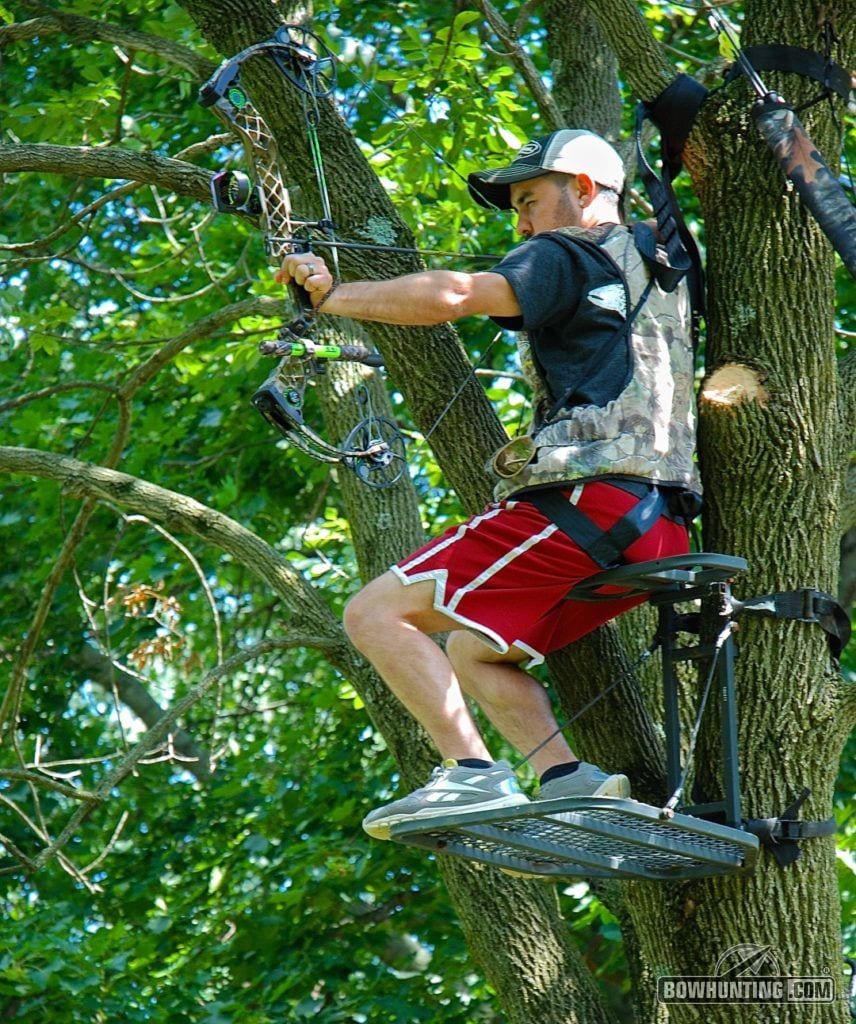As an athlete growing up, coaches would always encourage my sports teams to practice as though we were playing in a real game. The mindset was to avoid going through the motions, instead focusing on game-like scenarios, working hard to improve and form good habits, ultimately transferring these skills to the playing field when it mattered most.
The same could be said for archery and bowhunting. Becoming a consistently good bowshot doesn’t happen overnight, and it also doesn’t happen by stagnantly punching arrows into a target from 20-yards away. Do you know how to practice like you play?
Actual bowhunting situations present a diverse assortment of variables, such as unpredictable shot angles, distances, obstructions and timing, so archers must strive to vary their backyard practice sessions to reflect these potential hunting scenarios if they hope to perform at their peak in the field.
Too often, archers get stuck in a comfortable grind and only practice one type of shot situation. I’ve bowhunted for more than fifteen years and have yet to take a broadside shot at a whitetail while standing at ground level, though I’d be willing to bet this is the most commonly practiced shot on an archer’s backyard range.
Why? -Because it’s easy, familiar and convenient.

Practice in the various shooting forms you expect to encounter in the field. Practice from the treestand, on your knees, or seated in a chair ground blind chair.
That’s not to say this shot shouldn’t be practiced. It certainly has its merits when sighting in, building form and aiming consistency, as well as strengthening muscle memory. However, the reality is that most field shots are more likely to be taken from an elevated treestand or seated ground blind position.
A few years ago, I had the opportunity to hunt pronghorn antelope in Wyoming. Knowing the hunt would take place in late August from a ground blind overlooking a waterhole, I practiced all summer long shooting from a seated position.
After spending 12 hours baking in the blind, a shot opportunity finally presented itself, and my arrow hit home exactly where I had aimed. Unfortunately, I never recovered the animal; the expandable broadheads I was using at the time (and haven’t used since) didn’t deploy properly, resulting in minimal penetration and no blood trail to follow. We searched for hours but never found him.
It was extremely disappointing, but I’m certain my coming home empty-handed was not a result of shooter error. It was a shot I had practiced repeatedly, and I felt very comfortable going into the hunt. Sometimes, it just doesn’t work out.
But that doesn’t mean we have to give ourselves any more reason to fail. I encourage all bowhunters to take full advantage of the months leading up to archery season to fine-tune their shooting form in various hunting scenarios.
If planning to hunt from the ground, practice shooting from standing, seated and kneeling positions. Don’t just shoot at the pre-set distances of your sight pins, either. Practice shooting unfamiliar distances like 28.5, 7.2 and 43.6 yards- uphill, downhill and at eye-level.

If you’re preparing for a spot-n-stalk hunt, then practice from the ground in various shooting positions…standing, kneeling, squatting, and others.
Each of these various distances and shot angles presents a different approach for an arrow to reach its target, and only through repetition and mastery of one’s equipment can the outcome produce consistent results. The key is to shoot in a variety of scenarios to learn how your bow and arrows respond to each situation.
It can be fun to challenge a shooting partner to archery’s version of the popular basketball game, “HORSE.” Shooters take turns picking out random distances and stances to shoot for bulls-eye. Their opponent then tries to top it from the same shooting position. Whoever’s arrow is farthest from center gains a letter, and the first person to spell horse loses.

The reality is, few bowhunters ever practice shot angles from an elevated position. Things change when you climb 20 feet up a tree. Be sure to prepare yourself for game day.
If a treestand will be your primary hunting location, be sure to shoot from an elevated position. If possible, hang a stand in your backyard to practice downward shots regularly. A closer, more steeply angled shot is often more difficult to make than a farther one, but both should be practiced to mastery.
It is important to note that treestand shots are different than shots at eye-level. Archers should practice bending at their waist instead of at their knees to maintain a consistent anchor point. If shooting from a seated treestand position, knees should be kept as square to your mid-section as possible.
Obviously, use precaution and wear a safety harness. Not only will it help prevent injury, but it’ll also give you an authentic feel for what it will be like to shoot with a little added bulk. As temperatures cool off, try shooting in a lightweight hunting jacket to make things even more realistic.
Shoot in windy and low-light conditions, too, as these are often encountered in the field. Practice safely placing shots through narrow obstructions such as tree branches or other vegetation, and work on accuracy during rushed shots or when holding draw for lengthy periods of time is required.
Another good exercise is to simulate that over-excited, heart thumping moment when a massive buck is coming in on a string and you need to quickly settle your nerves.
Though the sheer adrenaline rush will be absent, you can elevate your heart rate by rapidly running in place or doing a few pushups until the blood is really pumping. Then quickly grab your bow, come to full draw, take a deep breath to collect yourself, aim, anchor, release, and follow through.

Consistently killing bucks with your bow won’t just happen. You have to make it happen. Perfect practice is one of the first steps.
3-D archery shoots are another great way to prepare for the season, as they present life-sized targets in realistic hunting conditions from a variety of angles, distances and shooting positions. Many clubs offer these events weekly for minimal cost. More bowhunters need to take advantage of this great resource.
Just remember to line up your shot angle in a manner that is mindful of where your arrow would likely exit on a real animal. Just because lifelike 3-D targets have scoring rings on them doesn’t necessarily mean that is the best aiming point depending on the angle of the target.
Always try to trace an imaginary line from the impact point of your arrow straight through the target to an optimal exit location, catching vitals and ensuring a quick clean kill- even if it doesn’t give you the highest score. As long as you’re not competing for money, it’s better to familiarize yourself with the anatomical features of wildlife and how to be as lethal as possible for every shot.
Preparing for bow season is just like prepping for the big game. The quality and quantity of work put in during practice will surely be reflected at the main event. If your shooting routine is haphazard and bland, you may not perform your best in the field. But by varying practice sessions to mirror the hunt, you will be well on your way to ensuring you play like a champion.






